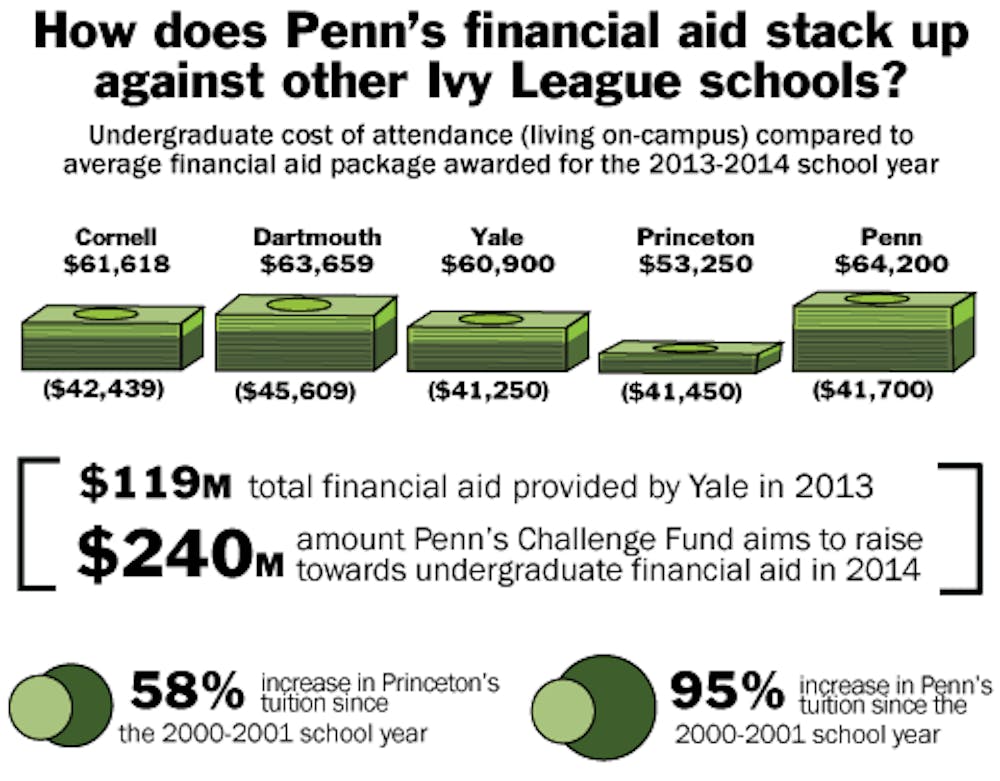Penn’s all-grant, no loan-policy is unique to the University, but how does its undergraduate student aid rank among some of the other Ivies?
On Friday afternoon, President Amy Gutmann announced a new initiative - effective immediately - that aims to raise $240 million for undergraduate financial aid.
As undergraduate costs rise in the upcoming academic year, the University estimates that the average grant for eligible students will increase to $41,700 for the 2014-2015 school year.
This academic year, the total financial aid budget was $188 million and the average grant per student was $40,200.
The DP takes a look at financial aid around the Ivy League.
Princeton University
At Princeton, where the 2013-2014 total cost of attendance for undergrads was $53,250, the average freshman received $41,450 in grants. The average grant covers the entire cost of tuition, according to Princeton’s Undergraduate Admissions. For expected family contributions, Princeton does not take into account the value of a family’s home when considering their assets.
Princeton is one of six colleges that offer need-blind admission and full-need financial aid to international students. The other five schools are Harvard University, Massachusetts Institute of Technology, Amherst College, Yale University and Dartmouth College.
Princeton offers its own financial aid application and does not require students to fill out or pay the fee for the CSS Profile.
While Princeton’s tuition has increased by 58 percent since 2000, its financial aid program has increased by 115 percent.
Cornell University
Cornell’s Award Match Initiative commits to matching the family contribution and financial aid offers from other Ivy League schools as well as Stanford, Duke and MIT. Additionally, its Loan Initiative offers need-based loans that are capped based on family income.
The total cost of attendance for a non-New York state resident in 2013-2014 was $61,618.
Dartmouth College
At Dartmouth, once a demonstrated financial need has been determined, the first source of aid comes from student self-help which consists of student loans and on-campus employment. As of summer 2012, Dartmouth eliminated loans from financial aid packages of students with family incomes of less than $100,000.
Grants and scholarships are awarded to those who still have a remaining financial need and students eligible for Federal Pell Grants are prioritized.
Outside scholarships can be used to reduce the self-help level of financial aid packages.
Dartmouth’s cost of attendance for the incoming Class of 2017 was $63,659.
Yale University
For the 2013-2014 academic year, while cost of attendance was $60,900, the average Yale Scholarship was $41,250. The University provided a total of $119 million in need-based financial aid this academic year.
Student self-help is the first form of financial aid and consists of a federal Work Study job or institutionally funded Term-Time job. Loan options are only made available at student request.



